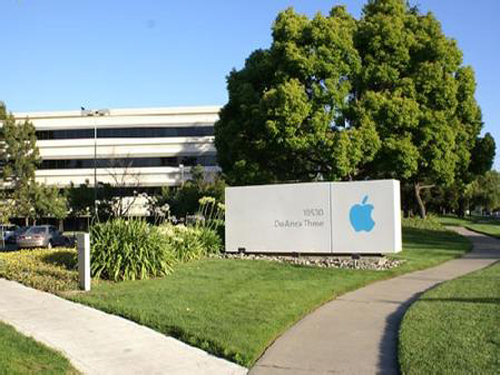Silicon Valley phenomenon

This year, the tide of mergers and acquisitions in the high-tech industry in the United States was surging. In the first seven months, a total of US$100 billion in mergers and acquisitions was announced, setting a record high since 2000.
Winners: Take-over by business owners: The forward-looking nature of Wall Street’s investment bank Silicon Valley reflects not only their innovation in technology and products, but also their increasingly close relationship with the financial industry (more specifically investment banks). Among them.
In a bit of detail, in the more famous mergers and acquisitions case, Apple did not hire an investment bank as a financial advisor for the $3 billion acquisition of high-end headphone and online music company Beats; Facebook’s $2.3 billion acquisition of virtual reality gaming company Oculus VR. And Oracle’s $5 billion acquisition of Micro Systems did not hire an investment bank. Before a single heavy purchase in 2011, Microsoft acquired Skype for $8.5 billion and chose to abandon the investment bank.
The current development trend may even make investment banks worry: In the case of high-tech mergers and acquisitions that occurred in the United States this year that exceeded US$100 million, almost 70% of them did not employ investment banks. Ten years ago this proportion was only 10%.
The most fundamental reason for this is that the role and skills of investment banks are increasingly mismatched with the needs of Silicon Valley.
Google has a famous toothbrush theory. Google’s boss Larry Page sums it up as follows: whether the company we acquired meets the toothbrush theory, that is, whether their product users will use at least one or two times a day, and whether users’ lives will become more because of using their products. Beautiful?
In short, Google’s mergers and acquisitions have abandoned the traditional methodologies, focused on usefulness, and are not profitable. The so-called usefulness over profitability.
The Silicon Valley acquisition rule, which values ​​the long-term potential of acquired companies and underestimates the short-term financial effects, is making Wall Street investment banks increasingly marginalized by Silicon Valley.
A deeper exploration into the reasons for the marginalization of investment banks can be attributed to the following two points:
There is a serious disconnect from the profession. More and more high-tech companies think that investment banks simply do not understand how companies like Google and Facebook are looking for target companies. (In fact, many of the mergers and acquisitions in the traditional industry are triggered by the investment bank's proposal).
Silicon Valley M&A Rules: Wall Street investment banks are being marginalized Investment banks are in the forefront of two things: one is valuation analysis and the other is negotiation.
However, the advantages of these two investment banks have basically disappeared in a large number of high-tech mergers and acquisitions. As soon as most of the target companies were established, there was no profit or low profit. The traditional DCF valuation analysis method did not apply at all, and the two major advantages of investment banks have been cut off. Second, the executives of acquisition companies (such as Facebook, Google, etc.) and the founders of many target companies have already been familiar with the negotiations become more direct and more private, and asked an investment bank to sit in the middle but hurt and infuriated rhythm. The investment bank was broken another arm.
It is also worth mentioning that the founders of many of these target companies were created in the process of admiring Facebook and Google. Idol acquisitions can not only achieve financial results, but also have a great sense of honor. This is somewhat similar to the bosses of the companies that are in Buffett's phase.
For the future career development of the ambitious young elites who have just entered the investment bank, the investment bank’s meal is definitely becoming more and more unpalatable.
When I was spending my holiday in Hong Kong some time ago, I had coffee in Starbucks in the morning and I read an article in Hong Kong’s economic newspapers and newspapers and read an article interviewing “The Father of Red Chips†Liang Bojun. In his article, he criticized that the technical content of current investment banking professionals is getting lower and lower. What they often do is not participate in the entire process of a large deal from beginning to end. Instead, they are asked by the boss to accompany customers (mainly based on mainland companies) to go shopping. , with his face to accompany laughter, but also help to mention large and small shopping bags.
Therefore, the essence of an invincible position lies in the thorough study of business science. This includes not only financial analysis capabilities but also a comprehensive understanding of the industry, including strong communication skills and excellent expressiveness.
If you are already in the tech group and you really like the analysis and mergers and acquisitions of the industry, you may consider doing a good job a few years later to move to a client company and become their in-house banker.
In the United States, Google and Facebook, as well as China’s Tencent and Alibaba, have their own corporate finance department or mergers and acquisitions department (or called the strategic development department). They both employ investment street professionals from the original Wall Street and build teams themselves to make acquisitions. The subject financial analysis work. In other words, although Silicon Valley does not require investment banks, they will always require professionals with extensive knowledge of investment banking.
Instead of paying huge investment consultant fees for investment banks, instead of paying the wages of investment banking professionals, this is a very optimized capital allocation! I believe this is what the investment bank taught them.
Aluminium Profile,Aluminium Rectangular Tube Profile,Aluminium Extruded Profile,Anodizin Aluminium Profile
KAM KIU ALUMINIUM GROUP , https://www.kamkiualuminium.com